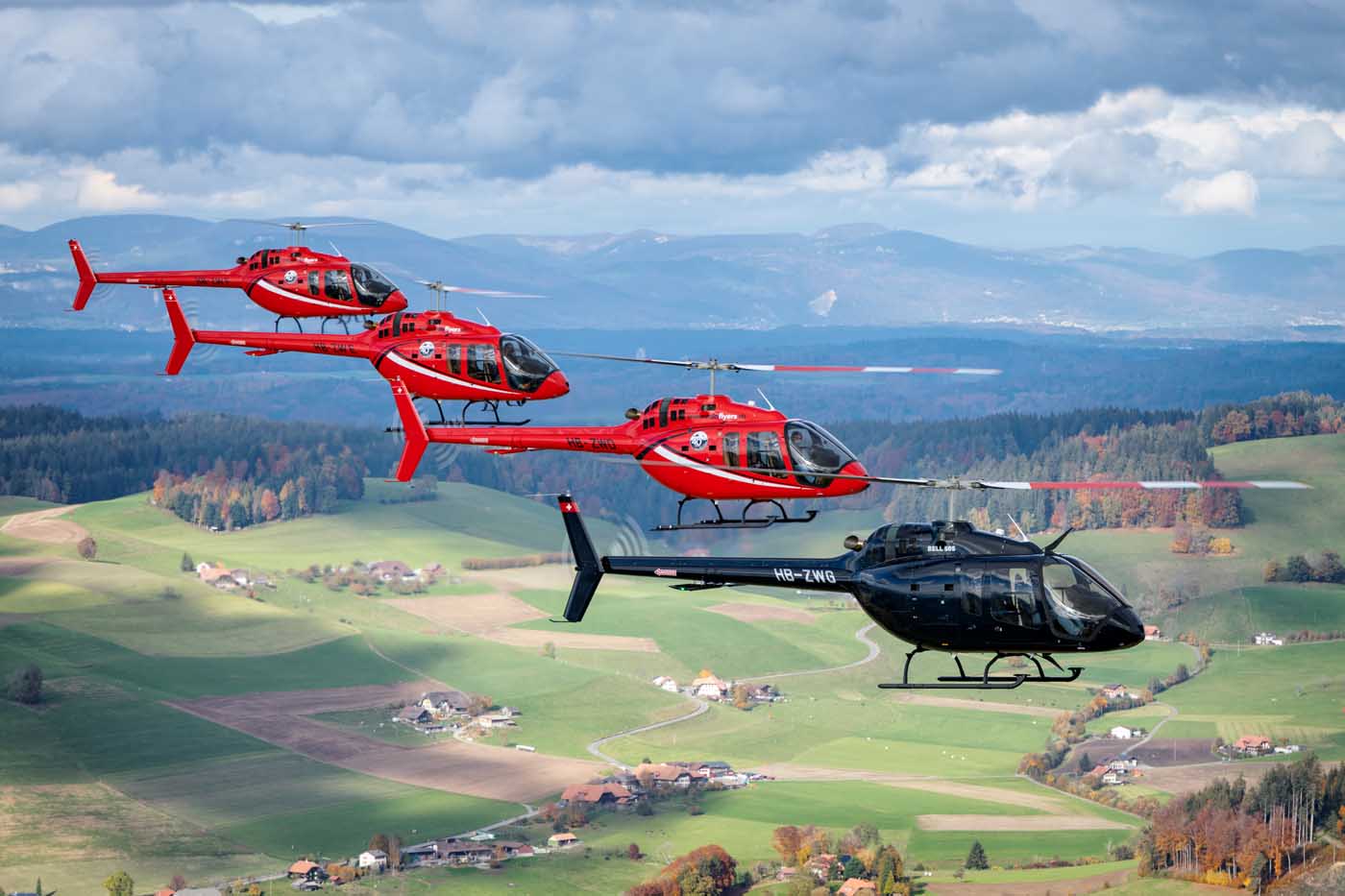Photos by Lloyd Horgan
There’s an oft repeated myth in the West that the Mandarin word for crisis is composed of two characters: one representing danger, and the other opportunity. It’s not a correct interpretation, but the idea that any situation can present a new opening is so appealing that the trope is often rolled out in business, education and politics.
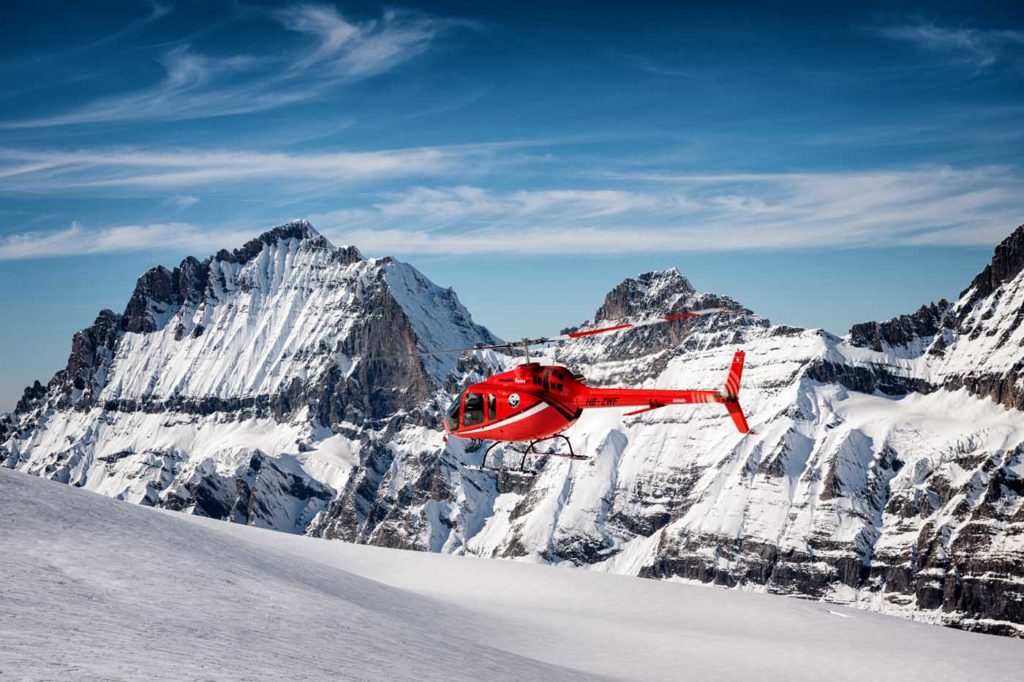
The coronavirus pandemic has been a crisis unlike any other in living memory, presenting new challenges for people from every walk of life. Everyone has had to make changes to adapt to the “new normal,” both professionally and personally. And for some, these evolutions have shown a new — and potentially better — way of doing things.
This is how Swiss-based utility operator and flight training school Mountainflyers has found itself leading a charge to certify a motion-platform virtual reality (VR) R22 simulator along with the device’s manufacturer, VRM-Switzerland.
But this is just one example of how the enterprising company continues to adapt and evolve even as it enters its fifth decade of operation.
Founded in 1980 by Ueli Soltermann, Mountainflyers came under the stewardship of current CEO Christoph Graf in 2006.
After gaining his private pilot license (PPL) with the company in 2000, Graf moved to the U.S. for a year for commercial training. By 2005, he had returned as an instructor, shortly after the company had been bought by a new investor.
“I was asked to become involved to bring back the business,” said Graf. “I was told when I got the business back running, I would get paid back with shares.”
Starting with one Bell 206 JetRanger and a Robinson R22, Graf began working on approvals for the flight school and commercial operations, as well as looking for new students. His efforts paid off.
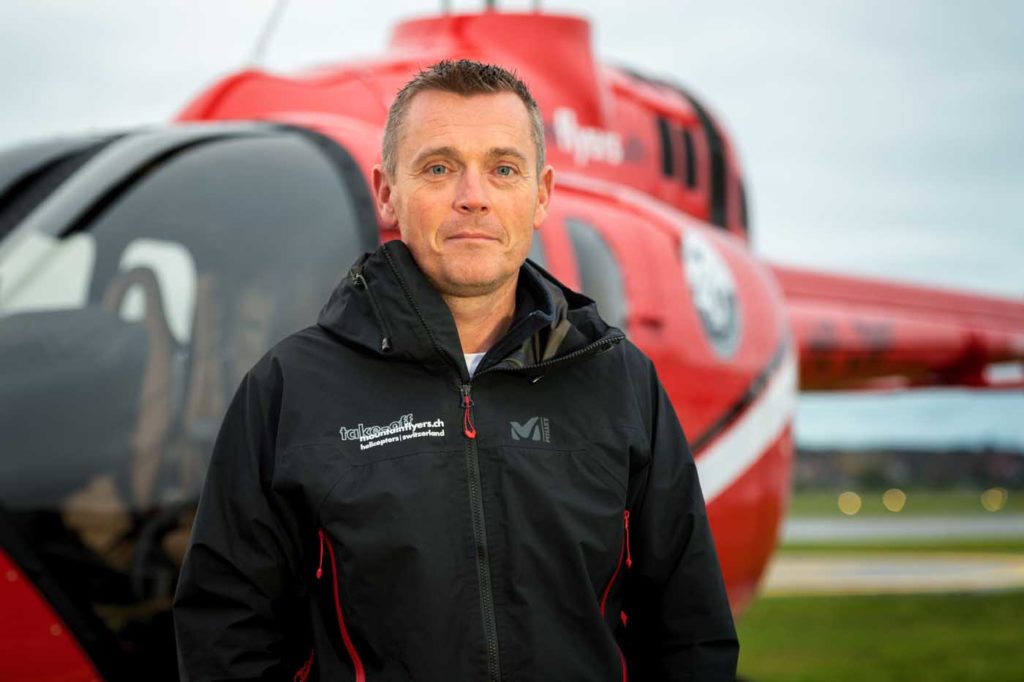
“To start off with I wasn’t paid much, but by 2012 I was able to take over the whole company,” said Graf. At the time that meant a fleet of five aircraft, but this has since expanded dramatically.
The company now has three bases in Switzerland (in Bern, Grenchen, and La Chaux-de-Fonds), as well as a fleet of 11 aircraft. Its Robinson R22 and R44 are used mostly for training, supplemented by three Bell 505 Jet Ranger X aircraft (two Bell 407GXi aircraft are due to be delivered in May). European manufacturers are represented in the form of an Airbus Helicopters H125 and a Leonardo AW109.
A future virtually guaranteed
No wonder the company is attractive for those looking to become professional helicopter pilots, but for students who had planned to begin their flight training at Mountainflyers in Switzerland in early 2020, it may have been hard to see opportunity within the Covid crisis.
“Two students started in February, and within two months came lockdown,” explained Graf.
Swiss coronavirus restrictions suddenly meant that they could be no closer than two meters (6.5 feet) to their instructors, a limitation that precluded them from sharing a cockpit and threatened to put paid to their ambition to fly before they even got off the ground.
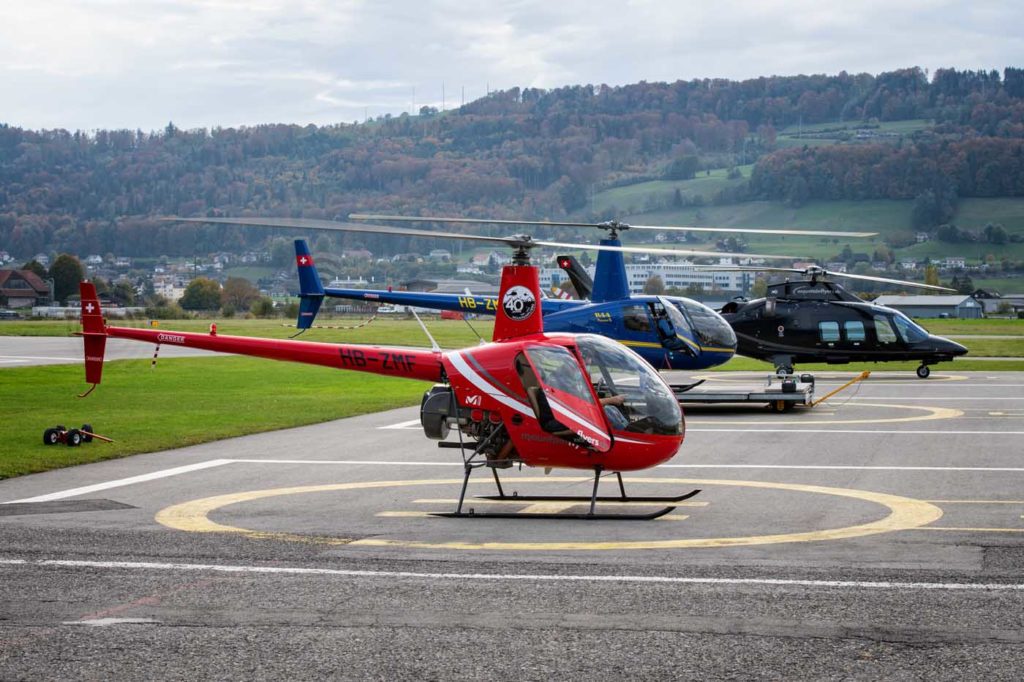
But less than a year before the Coronavirus pandemic began its rampage around the world, Mountainflyers had become the launch customer for a motion-platform virtual reality (VR) R22 simulator from VRM-Switzerland. Without any regulations that would allow its certification under the European Aviation Safety Administration (EASA), the system seemed limited to a supporting role. However, the team at Mountainflyers saw a potential to learn; both for their students and themselves.
“We couldn’t do practical training and with lockdown we had students that couldn’t go any further on the helicopter,” said Graf. “So, we started with hover exercises in the simulator.”
The students flew the early exercises in VR, as well as practicing standard flying procedures. Access to the simulator was provided at no additional cost to the students, but being uncertified, the hours couldn’t be logged or attributed in any way. Nonetheless, the value in those hours would be revealed as soon as the lockdown was lifted.
“After the lockdown, the students moved to the helicopter, and they flew,” said Graf. “They could do almost exactly what they had been doing in the simulator.”
The cost-saving implications of this transition from virtual to live aircraft might not be obvious. After all, students must still complete the minimum mandated flying hours before their skill test. Their advantage was that they were already familiar with the techniques.
“We didn’t have to start like with a normal student, we could go faster after the simulator,” explained Graf.
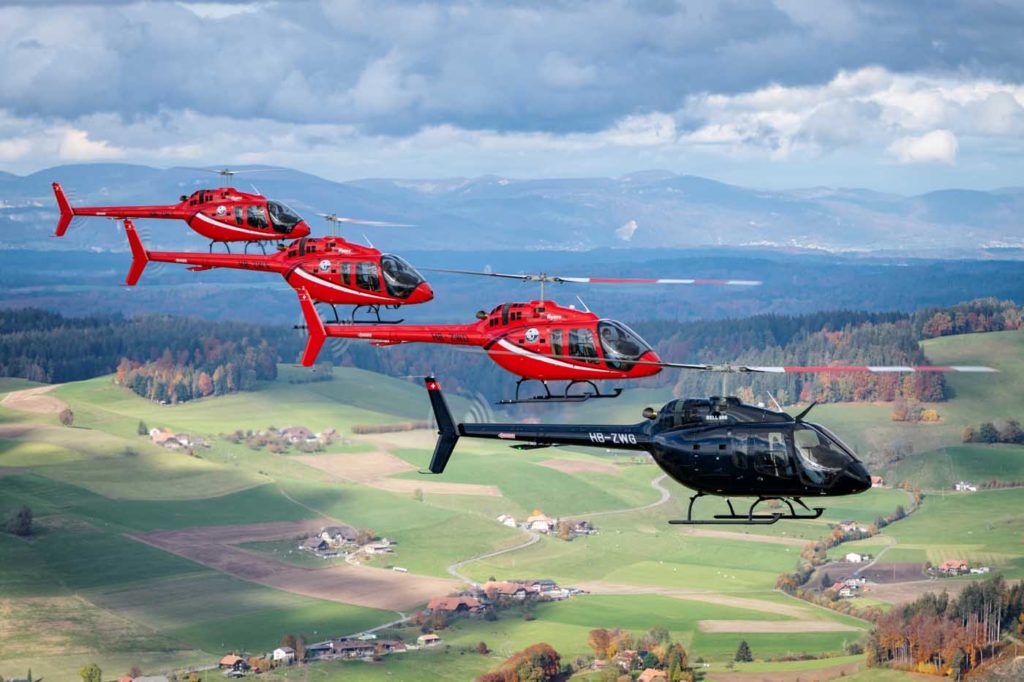
This acceleration in the program provided the value. Few students complete their training within the minimum hours limit, and a great deal of the variability in training outcomes appears early in the syllabus. The VR simulator allows a means of practicing vital skills at a vastly reduced cost, in any weather or time of day. Hours saved learning the art of the hover translate to a greater chance of completing the course at minimum cost, and of course the simulator is just as capable of providing opportunities to practice more advanced skills later on.
Having identified these fringe benefits, the team at Mountainflyers was encouraged to expand the utility of the new technology. The company has partnered with VRM-Switzerland to have the first certified VR simulator in the world, with both EASA and the Federal Aviation Administration (FAA) in the U.S. having expressed interest in the project.
New methods
Central to this project has been Claude Vuichard, who is not only the developer of the eponymous recovery procedure for vortex ring state (VRS), but also a flight instructor with Mountainflyers. Now in retirement, he still flies and remains committed to improving helicopter safety and finding innovative ways to train the next generation.
“I decided to dedicate my retirement to helicopter safety,” said Vuichard, who often gets emails from people telling him that his training saved their life. “That’s worth more than any salary.”
As early as 2018, Vuichard was espousing the benefits of the VR simulator, and sees it as a vital part of combating what he calls “negative [skill] transfer.”
“If your instructor never shows you the limit of the aircraft, if you suddenly need [full control inputs] and you’ve never experienced that, you’re not trained for it,” he explained.
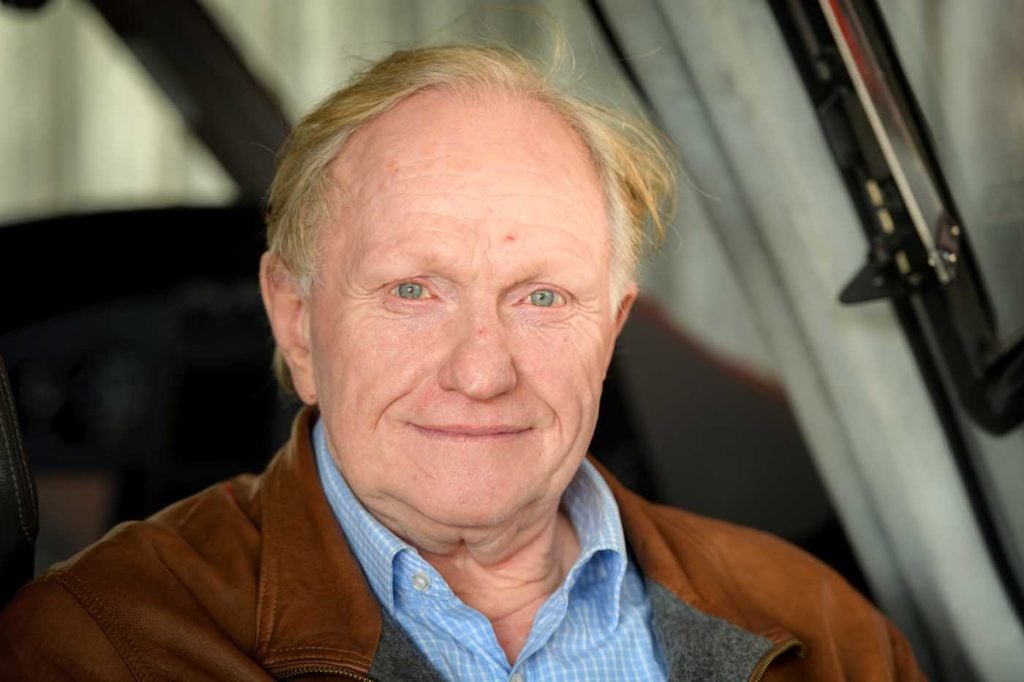
Vuichard believes such conditions lead to loss of control with potentially serious outcomes, and that safe exposure in the simulator is the answer. “A lot of accidents are in relation to negative transfers,” he said. “That’s also an advantage of training here with the new simulator.”
Getting the costs low enough for inclusion in the initial stages of training is crucial to the success of the system, said Vuichard. “What happens 20 years after you were trained, when you have an emergency like VRS, you go to the initial wiring in your brain; your automatic reaction from your first training.”
Vuichard believes it is not just the novel simulator that gives Mountainflyers the edge. “We have a big fleet, well-trained instructors and a big playground,” he explained. “In five minutes, you can be in the mountains; in 12 minutes, in the high mountains, where you can still conduct off-field landings.”
Switzerland is unusual in offering these opportunities, particularly appealing to pilots from nearby countries where such landings are prohibited. Mountainflyers offers the training required for a unique, nationally-regulated mountain flying license that grants permission for pilots to land at mountain sites.
To further enhance this training, Mountainflyers has already bought a version of the new simulator that replicates the H125, a stalwart within alpine helicopter fleets, which it has installed at its Grenchen base.
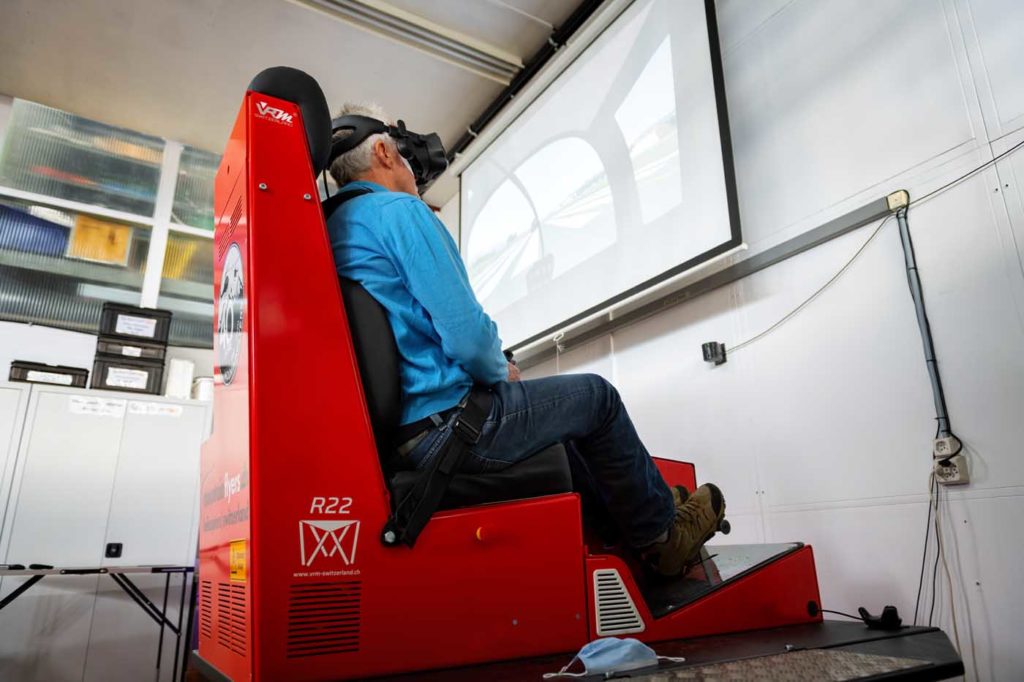
While much less expensive than alternative full-motion high-fidelity certified equivalents, the certification process for the VRM-Switzerland system will not be cheap. Mountainflyers is counting on its benefits extending into commercial training as well as the “initial wiring” of students working towards their private license. Graf explained that the broader applicability of these systems is crucial to offsetting their cost.
“It’s a huge change to get a simulator for a small single-engine helicopter, especially the H125,” he said. “It could be a huge increase in safety, because when you always need to go to a [EASA certified] Level D simulator it is really expensive.”
As ever, the risk and cost are in perpetual tension, but Graf believes that Mountainflyers’ system makes the numbers easier to calculate.
“Our regulatory requirement for operations crew training has increased by a factor of around four in the last four years,” he explained.
The company is forecasting that the risk it takes against customer demand for its simulator will be offset by reducing its reliance on using third-party, high-cost systems for recurrent training.
The regulations that demand such training are another potential threat that Mountainflyers has worked hard to convert into a strength, or at least an opportunity.
“We have our own Approved Training Organization, our own Air Operator Certificate, and maintenance, compliancy and quality management system. All by ourselves, we are not in a group,” explained Graf. “It costs an unbelievable amount of money.”
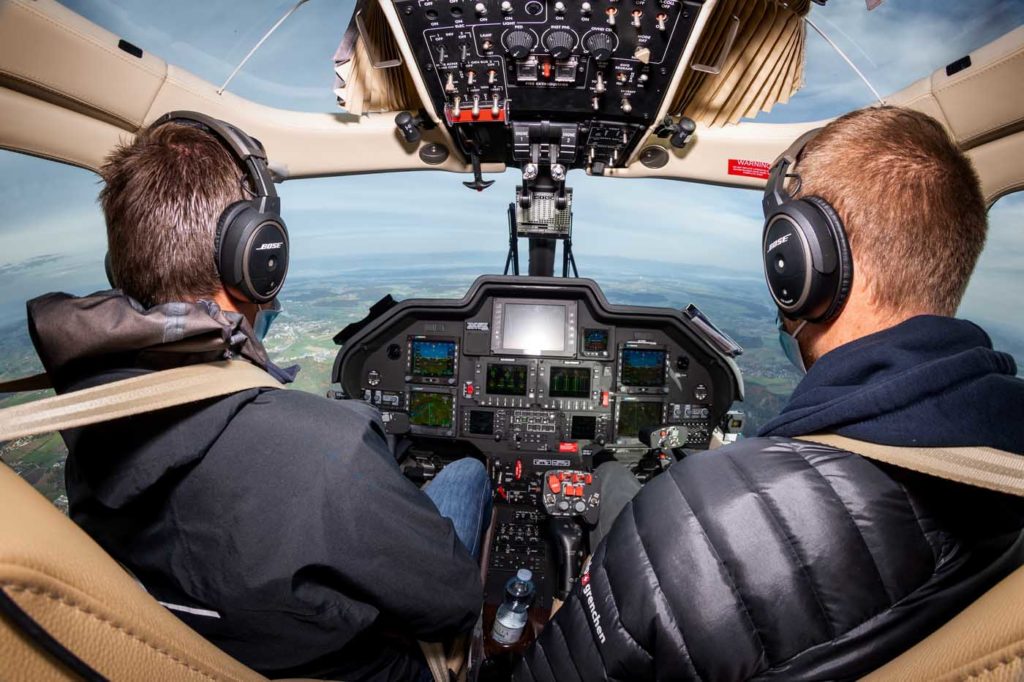
When Graf started with the company, he was flying approximately 600 hours per year, but now the administrative workload won’t support that amount of time in the cockpit.
Regulatory scrutiny and the effort that it takes to demonstrate compliance are a burden that afflicts all companies across the sector. So when a former FOCA (Federal Office of Civil Aviation) official came to work for him, Graf jumped at the opportunity to use their skillset and expertise to turn Mountainflyers into an example of best practice.
“He spent around six months rebuilding the manuals and getting the papers exactly like they should be,” explained Graf. “A lot of other companies thought we were crazy, but now they’re starting to ask how he did it.”
Despite spending less time in the cockpit, Graf still manages to fly from time to time.
“I still fly 150 to 200 hours a year,” he said with a rueful smile. “I’m the joker card; when nobody else can do the job, I get to do it.”
Perspective matters
This administrative burden is the inevitable result of growing such a successful operation, but Graf still had a longstanding ambition to fulfill.
“Since 2010 I felt we should have a twin-engine aircraft based in Bern, because of the proximity to Gstaad,” he explained.
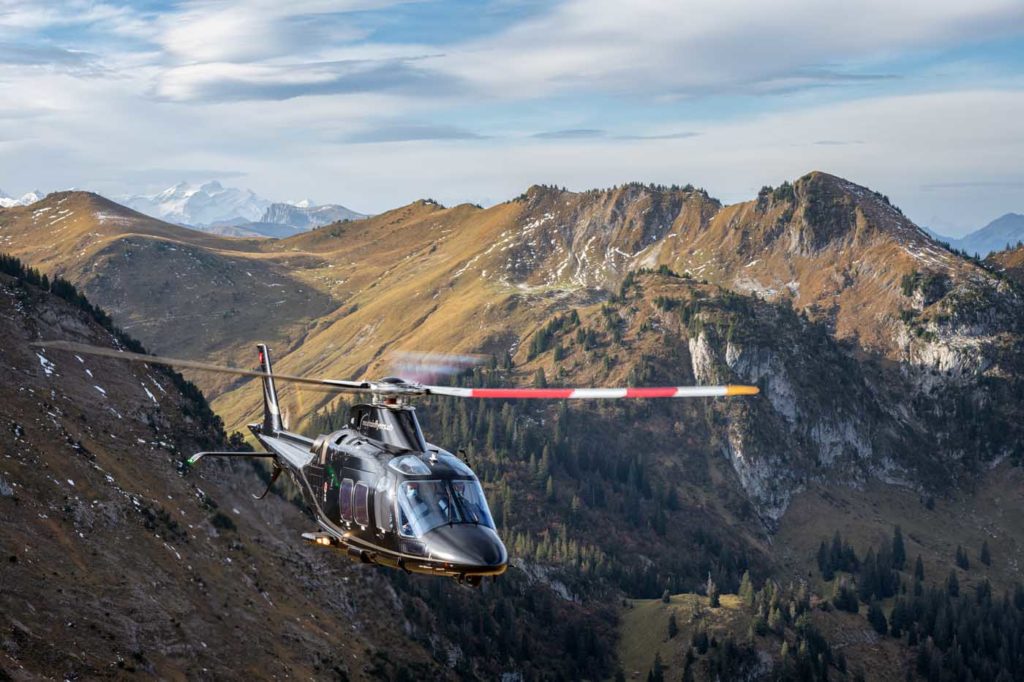
This small town nestled in the Alps has been a ski resort favored by the rich and famous since the turn of the 20th century. Mountainflyers’ Bern base provides the opportunity to swap a 90-minute car journey through the mountains for a 15-minute cruise in a helicopter. However, those with the means to do so usually prefer to travel in a twin, which previously meant flying from Geneva.
While it hadn’t been economically viable for Mountainflyers to operate a twin, that changed in 2016, when a PPL student declared an interest in buying a twin for private use.
“I told him about the concept of operating from Bern,” said Graf. “And he decided to buy a twin for personal use and for IFR [instrument flight rules] training, and for me to sell it into the VIP market.”
With the requirements of both missions considered, a Leonardo Helicopters AW109 was added to the fleet. Unsurprisingly, business is at its best in ski season. Equally predictably, the coronavirus pandemic took its toll.
“VIP taxi flights are always popular in the winter-time,” explained Graf. “But of course, this year it has been different.”
Mountainflyers has again seen a silver lining among the clouds. With typically gregarious Swiss tourists prevented from travelling, the company’s sightseeing operation was expanded to offer a chance to admire the beauty in their backyard.
“The main part of our business is training, and over the weekends we do a lot of sightseeing tours,” explained Graf. “But this year, a lot of Swiss tourists couldn’t go on holiday, so we offered them a nice Matterhorn flight instead.”
Light shift
By early 2020, fleet harmonization offered the opportunity for savings. “We had four types and two variants, and it was too much to organize,” said Graf. “So, we needed to sell our EC120, and this left us with a decision.”
For a company that counts tourism flights as a major revenue stream, finding a replacement for a stalwart in this sector was not a decision to be taken lightly.
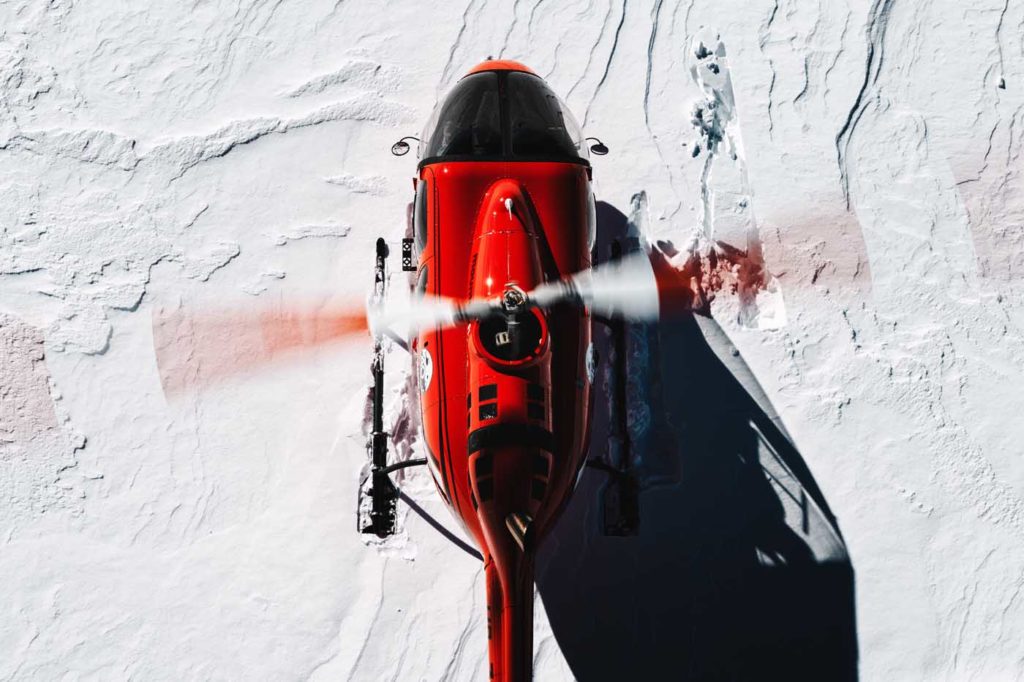
“We had two options,” explained Graf. “To add another R66 or to change to a new product.”
After evaluating the available options, the R66 and the EC120 were replaced with a fleet of three new 505s.
“The Bell 505 has a [Garmin G1000] glass cockpit, which is a huge increase for student training quality,” said Graf. “I believe in learning to fly with the latest technology, because as a professional pilot you need to know how to manage these systems.”
The aircraft’s vast area of transparency also offers pilots and sightseeing tourists an excellent view outside; without a center pedestal between the pilots’ seats, even the middle rear seat affords good visibility.
Another attraction for Graf was the dual-channel FADEC and the protection it offers, particularly for those less familiar with turbine engines.
“With so much training and [self-fly hire], the FADEC makes the aircraft much easier to start and reduces the risk of a hot start,” said Graf. “The system also provides very stable power, even high up in the mountains. The 505 is perfect for this because you don’t need to lead with power as much as with other aircraft.”
This matters a great deal during a summer sightseeing trip taking four tourists up to a landing site at 13,000 feet (3,960 meters) above sea level.
“Before we made the decision, we looked closely at the performance data,” said Graf. “We got what we expected, and it’s good.”
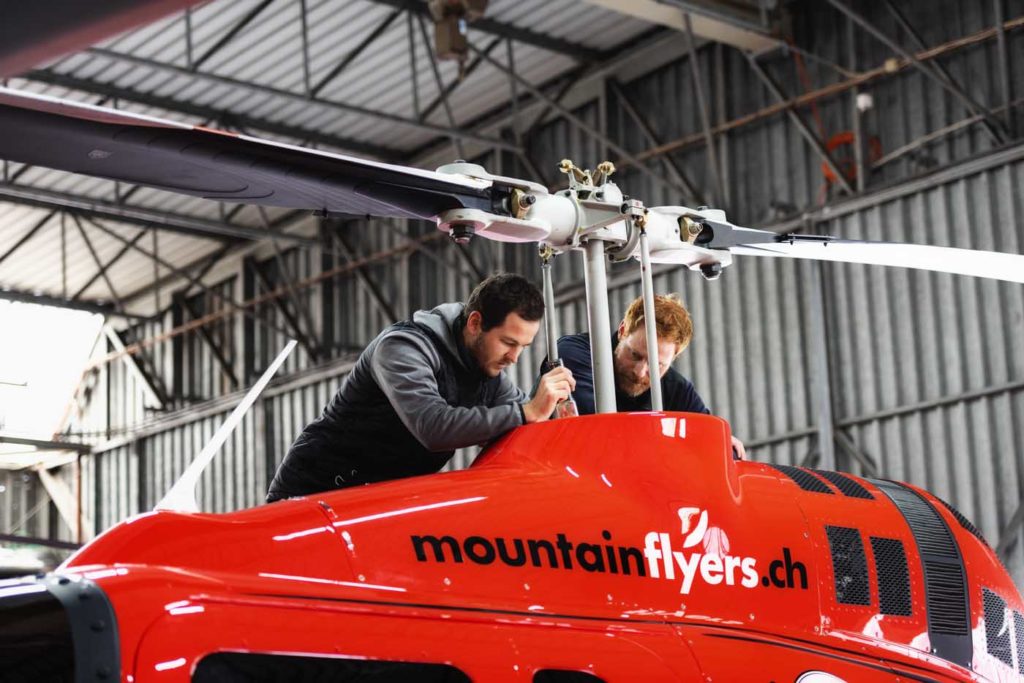
With training its focus, it is tempting to assume that the success of Mountainflyers rides on the quality of the instructors. It trains approximately 40 students per year, from whom they can take their pick for future instructors, and have a fleet of aircraft that are all perfectly suited to training at various levels and altitudes.
“Training is our specialty,” said Graf. “We do it very well and have invested very heavily in the training syllabi.”
But despite the focus, Mountainflyers’ commitment to new ideas is illustrated by its decision to share the painful journey of certification of the VR simulator with VRM-Switzerland, and its readiness to take the leap of faith by placing a block order for three Bell 505s, a type it had not previously operated.
Graf explained that the company’s ethos is to help students get the most out of what is an expensive investment.
“Every member of the team has to understand what their role is in the company,” he said. “Not to develop their own flight hours, but to focus on what the student needs.”
Its ability to blend new ideas with hard-earned experience has allowed Mountainflyers to navigate not only the last four decades, but also the unprecedented challenge of the coronavirus pandemic. However, it is the spirit of the company that has allowed it to realize the opportunities presented by its response to that crisis.
If Mountainflyers continues to apply Swiss efficiency to delivering the most value from its clients’ hard-earned Francs, then its future seems secure.





